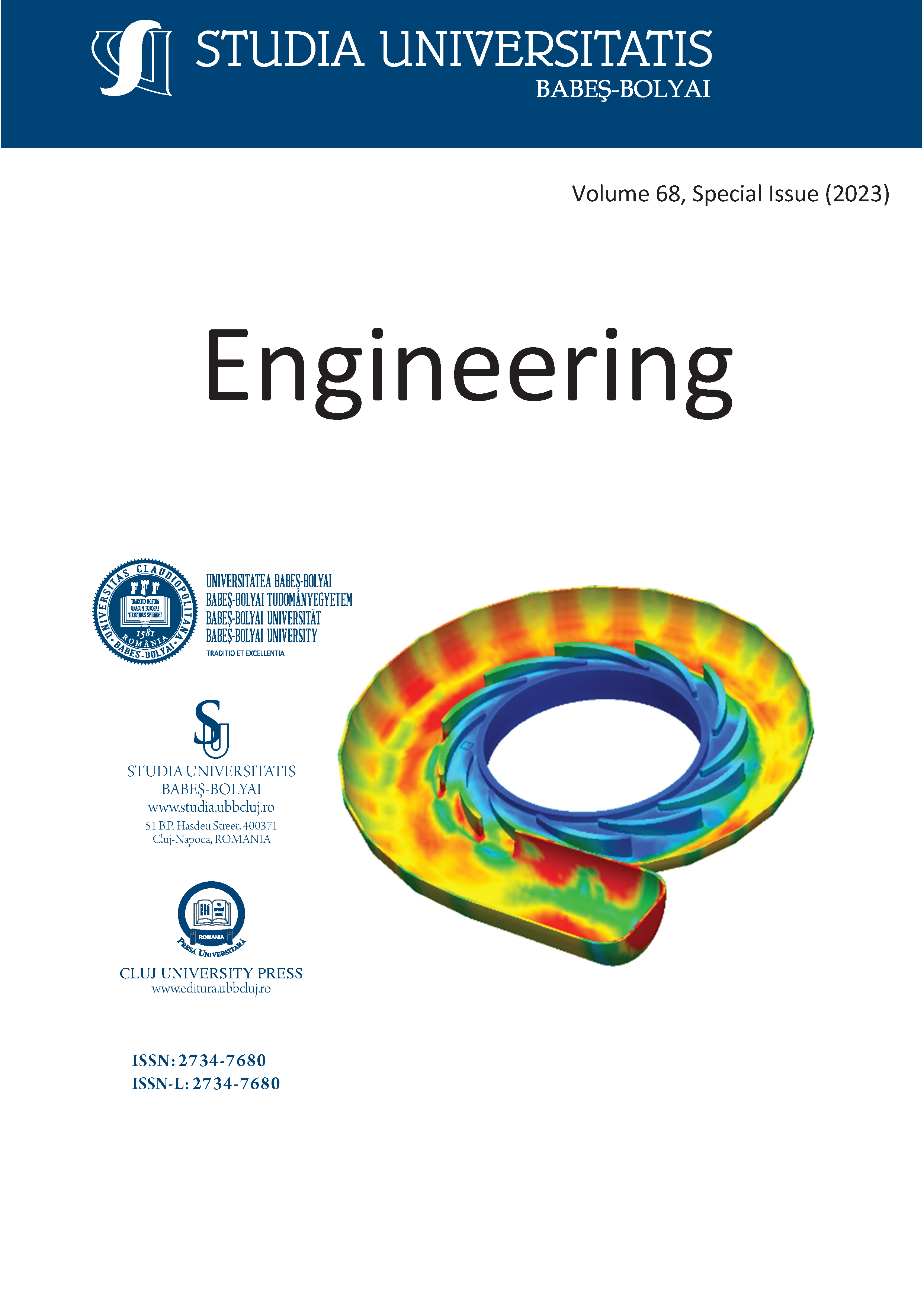Crimping Tool Wear and Tear Analysis
DOI:
https://doi.org/10.24193/subbeng.2023.spiss.6Cuvinte cheie:
crimping process, spare parts lifetime, anvil, crimper, value engineeringRezumat
This paper represents an investigation into spare parts longevity in the context of automotive production. By systematically examining the accuracy of the crimping process, our research unveils the potential for cost reduction by pushing the limits of the usage of crimping tooling, while maintaining production efficiency and quality. Preliminary findings reveal encouraging prospects, but underscore the necessity for further examinations, maintenance strategies, and the development of predictive models. Through the tests described in this paper and the obtained results, it has been concluded that the limits imposed by the procedure can be extended (thus reducing production interruptions and associated costs). Extending these limits cannot be determined by a universally applicable rule, therefore, additional analyses are necessary, analyses that will be the subject of further research.
Referințe
Rachwan R., Abotaleb I., Elgazouli M., The Influence of Value Engineering and Sustainability Considerations on the Project Value, Procedia Environmental Sciences, 34, 2016, pp. 431-438, https://doi.org/10.1016/j.proenv.2016.04.038.
Behncke F., Maisenbacher S., Maurer M., Extended Model for Integrated Value Engineering. Procedia Computer Science, 28, 2014, pp. 781-788, https://doi.org/10.1016/j.procs.2014.03.093.
Mocellin K., Petitprez M., Experimental and Numerical Analysis of Electrical Contact Crimping to Predict Mechanical Strength, Procedia Engineering, 81, 2014, https://doi.org/10.1016/j.proeng.2014.10.274
Morgado L., Teixeira A., Sá, J. Pinto Ferreira L., Almeida F.D., Analysis and Development of a Failure Prediction Model for Electrical Terminals Used in the Automotive Industry, Procedia Manufacturing, 51, 2020, pp. 207-214, https://doi.org/10.1016/j.promfg.2020.10.030.
Jongwuttanaruk K., Thavornwat C., Optimization of Mechanical Crimping in the Terminal Crimping Process Using a Response Surface Methodology, Advances in Materials Science and Engineering, Article ID 6508289, 2022, https://doi.org/10.1155/2022/6508289.
Dragomir F., Manescu T., Gillich G.-R, Korka Z. Tufisi C., Influence of vibration and environmental factors on a crimped assembly resistivity, Vibroengineering Procedia, 51, 2023, pp. 173-178, https://doi.org/10.21595/vp.2023.23681.
Castro T.A.M., Campilho R., Optimising a Specific Tool for Electrical Terminals Crimping Process, Procedia Manufacturing, 11, 2017, pp. 1438-1447, https://doi.org/10.1016/j.promfg.2017.07.274
SAE International, Performance Specification for Cable-to-Terminal Electrical Crimps. SAE/USCAR-21, 4th SAE International, U.S. and Canada, 2020. https://global.ihs.com/doc_detail.cfm?document_name=SAE%20USCAR%2D21&item_s_key=00407431.
Descărcări
Publicat
Cum cităm
Număr
Secțiune
Licență
Copyright (c) 2023 Studia Universitatis Babeș-Bolyai Engineering

TAceastă lucrare este licențiată în temeiul Creative Commons Attribution-NonCommercial-NoDerivatives 4.0 International License.



